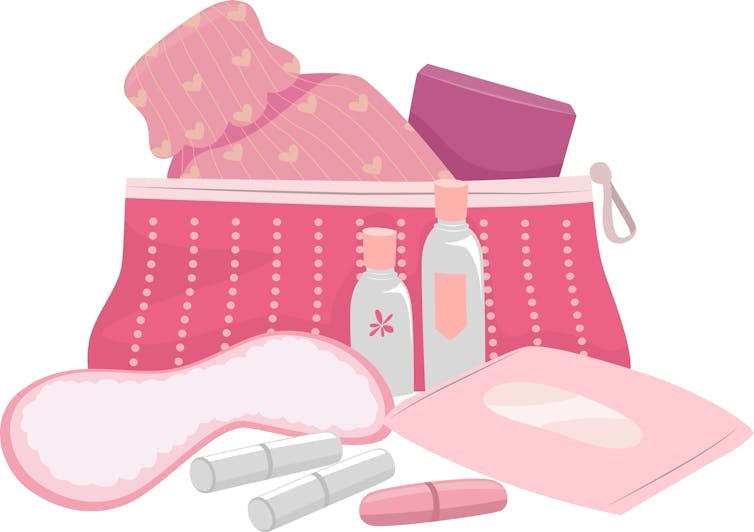The British government is consulting on a new curriculum for sex and relationship education in English schools. This change provides a timely opportunity to update how, when and what children are taught about puberty.
Astonishingly, the Department for Education (DfE) guidance on sex education has not changed for nearly two decades. But after concerted lobbying, research, and the recommendations of multiple committees of MPs, in 2017, the Children and Social Work Act finally acknowledged the need to provide “sex education for the 21st century”.
New statutory guidance for schools will be published following the public consultation, which closes in mid February. From 2019, secondary schools will be obliged to offer relationships and sex education, and primary schools to offer relationships education. Parents will retain the right to remove their children from sex education – other than that which is covered in the science curriculum – but will not be allowed to remove them from relationships education.
These changes are underpinned by widespread concern about the negative effects of digital technologies on young people’s sexual lives, particularly sexting, child sexual abuse and exploitation, and “strangers online”. The new curriculum will, it seems, teach children and young people what healthy relationships look like in the fraught context of smart phones, online porn and Instagram.
The new puberty
But the new curriculum should also take account of what is happening to the bodies of young people in the 21st century. Not only do kids seem to be growing up much faster today, many of them are actually starting to develop physically earlier than ever before.
According to many scientists and clinicians, we are living in the era of “the new puberty” in which increasing numbers of girls start to develop sexually at age seven or eight. In the 1960s, only 1% of girls would enter puberty before their ninth birthday. Today, up to 40% of some populations in both rich and poor countries are doing so.
Sexual development is also being stretched out for longer, with many girls starting to grow breasts and pubic hair two to three years before they have their first period. While there is less evidence that boys’ development is changing so rapidly, some studies also indicate that earlier entry into puberty’s initial stages is becoming more common.
Listen to Celia Roberts talk about early puberty in this extract from The Anthill podcast on Growing up.
The causes of these changes remain unclear. Many scientists point to the simultaneous increase in childhood obesity, while others study the effects of environmental chemicals, such as Bisphenol A or BPA (which is found in some plastics), on the body. Other research has explored the effects of social factors, including family structures, experiences of early life trauma and socioeconomic disadvantage. This range of explanations points to how complex a phenomenon puberty is.
The current DfE guidance states that:
All children, including those who develop earlier than the average, need to know about puberty before they experience the onset of physical changes.
But it leaves schools to decide, in consultation with parents, “the appropriate age” to teach children about puberty. In 2017, the Personal, Social and Health Education Association argued that this should be when they’re age seven. But talking to seven-year-olds about breasts, pubic hair, body odour and genital changes may not be easy for many teachers, or for many parents. Being seven is supposed to be a time of freedom, play and innocence.

Updating sex education
Children who develop early, present a challenge both to cultural thinking about sex and to sex education policy. While many parents and young people want updated sex education, this usually comes with the proviso that such education be “age appropriate”. Although very important, this phrase is painfully vague – and it’s unclear whether it refers to chronological age, emotional age or stage of physical development.
Today, some seven-year-olds may be emotionally young but also starting to grow breasts and pubic hair. Other early developers who have experienced early life stress – such as abandonment or abuse – may feel more mature than their peers and be ready earlier to learn about puberty and sexuality. The widening gap in the timing of boys’ and girls’ sexual development also poses a challenge. Teaching girls separately, or earlier than boys – the strategy in my own child’s primary school – risks reinforcing harmful gender norms and notions of secrecy around issues such as menstruation.
Instead, perhaps we could try to disentangle puberty from teenage sexuality and to develop accounts of puberty that do not frame it as the dawn of adolescence. A seven-year-old with breasts is not “becoming a woman”, and a menstruating nine-year-old is probably not going to want to have intercourse anytime soon.
Ultimately, this means moving beyond traditional portrayals of female bodies that focus on reproductive capacity in order to explore wider meanings and experiences of being a girl. Growing up is also about new horizons, such as strength, health, even pleasure. Sex and relationships education might even then include puberty as something to be anticipated, noticed, even celebrated – rather than as yet another risk.
Author: Professor of Gender and Science Studies, Lancaster University
Credit link: https://theconversation.com/puberty-is-starting-earlier-for-many-children-sex-education-must-catch-up-with-this-new-reality-89608<img src="https://counter.theconversation.com/content/89608/count.gif?distributor=republish-lightbox-advanced" alt="The Conversation" width="1" height="1" />
The article was first published by The Conversation (http://www.theconversation.com) and is republished with permission granted to www.oasesnews.com

